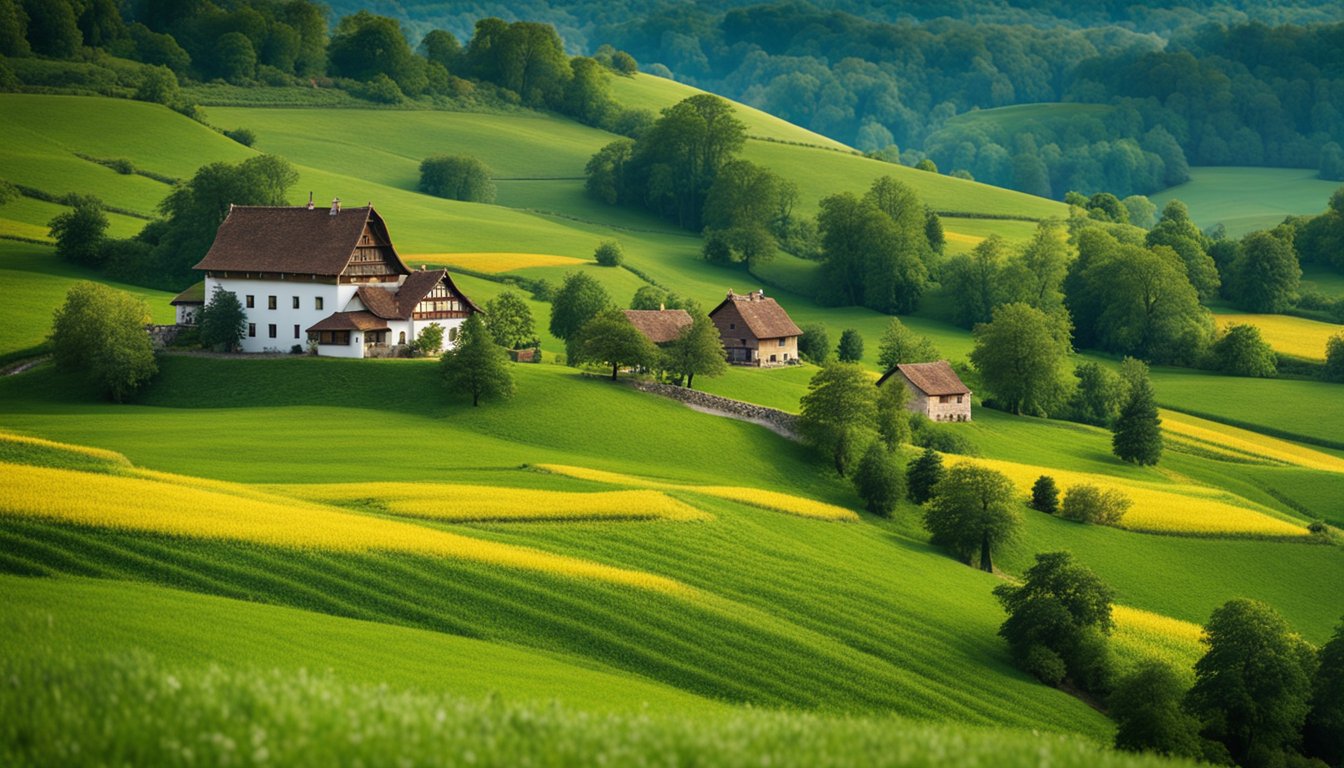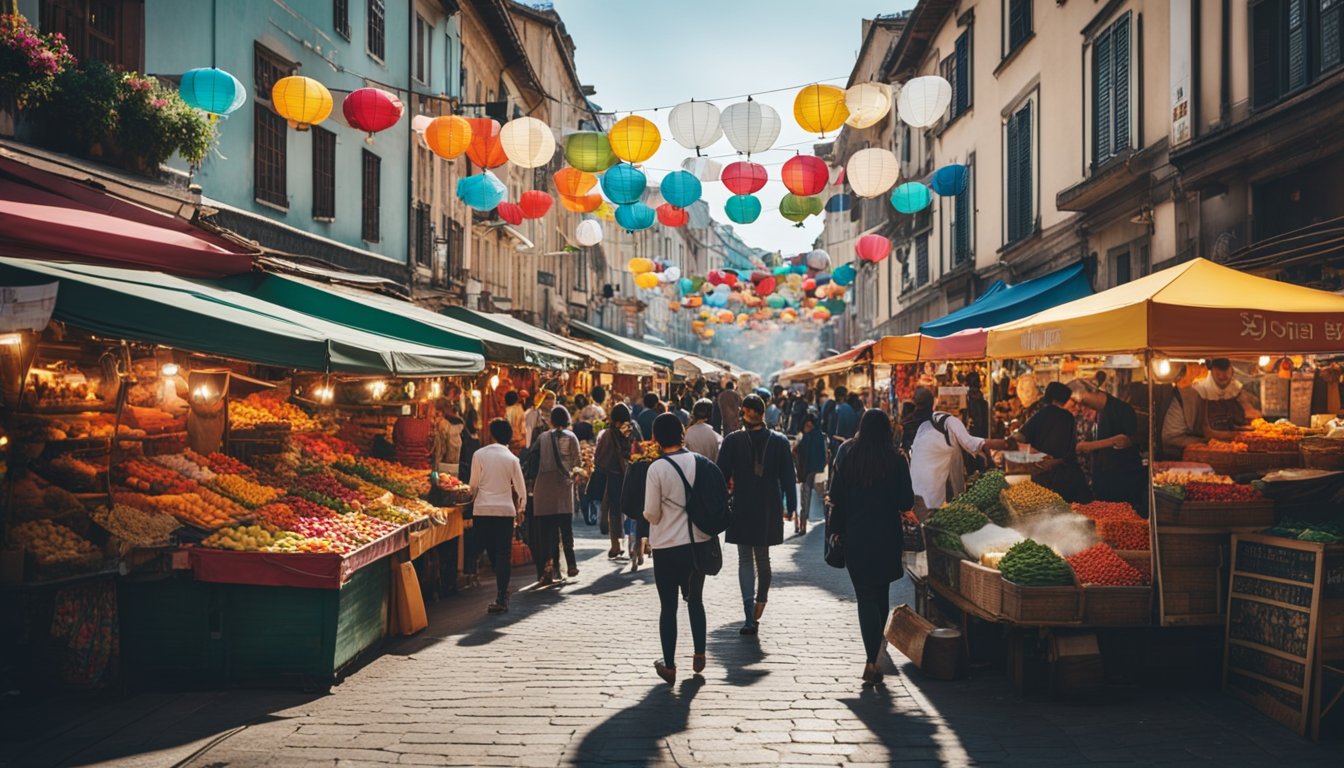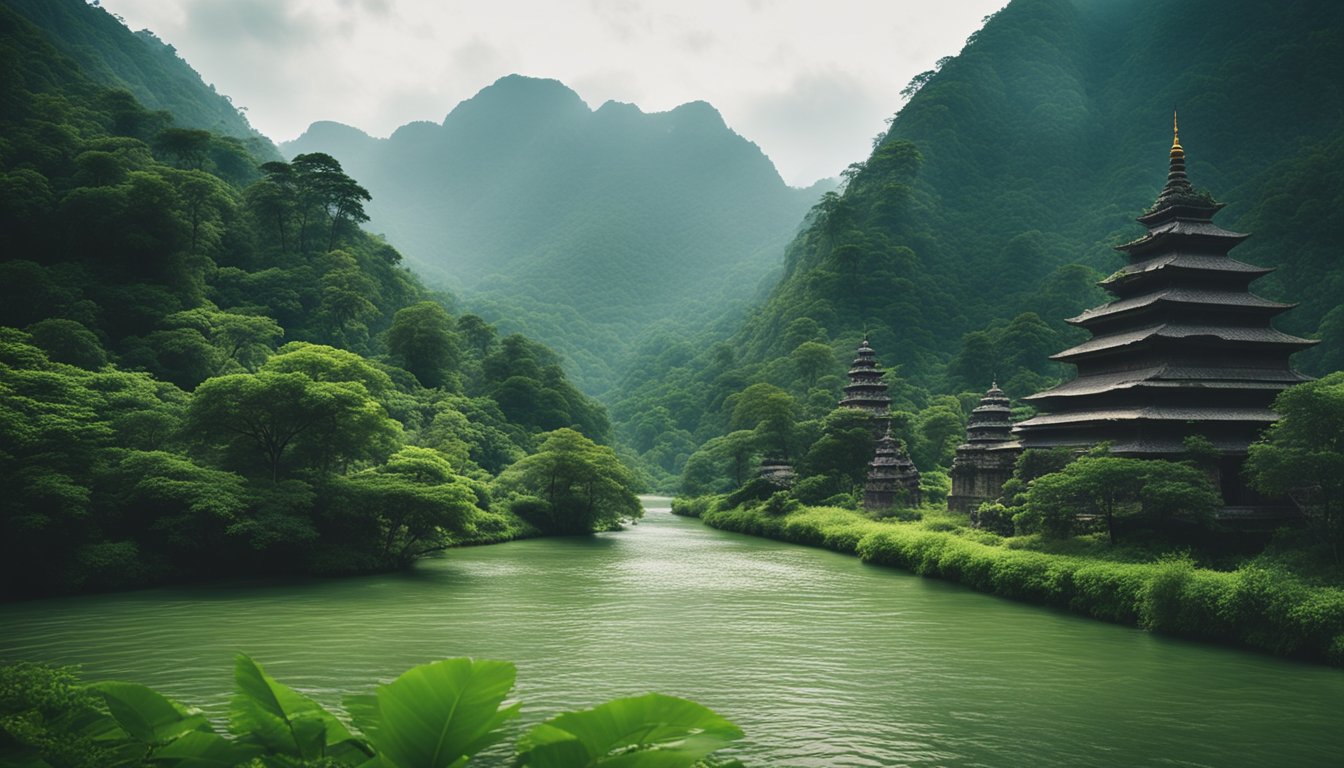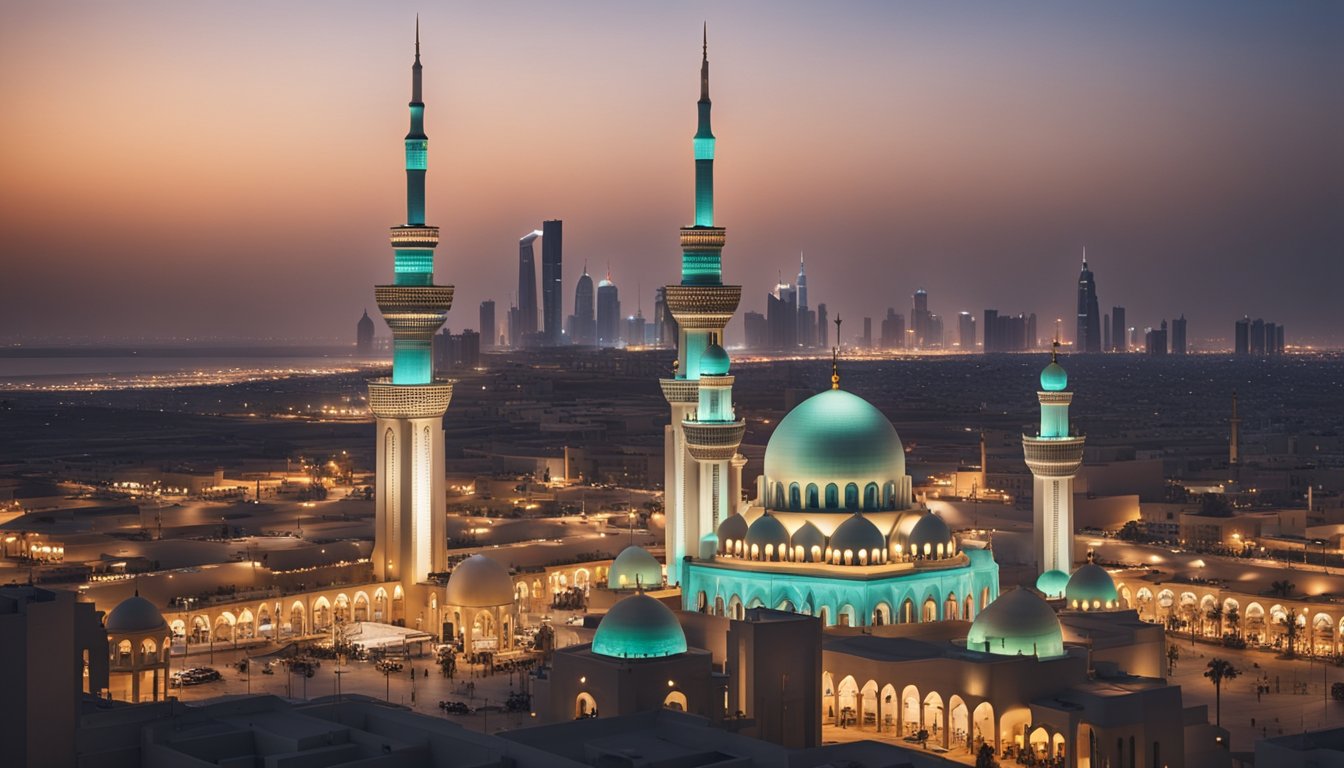Hungary’s countryside offers a rich tapestry of landscapes, from rolling vineyards to tranquil riverside towns. It’s a part of Europe where tradition and nature intertwine, providing a starkly different experience from the bustling city life of Budapest. Travelers looking for a serene escape or an authentic slice of Hungarian culture will find that rural Hungary delivers an array of unique experiences. Planning a journey through these rustic areas offers a chance to immerse oneself in the harmony of nature and the warmth of traditional Hungarian hospitality.

The rural regions of Hungary are dotted with historic sites, thermal baths, and splendid natural parks. Visitors might find themselves exploring the Baroque architecture of small towns, enjoying the local wines of Eger and Tokaj, or walking in the footsteps of history at the ruins of medieval fortresses. While the ease of modern travel can take one across the country swiftly, many of these charming destinations are best explored at a leisurely pace, allowing for a deeper connection with the land and its people.
A critical aspect of planning a trip to rural Hungary involves understanding the local customs and seasons. Certain times of the year bring festivities that can enrich a traveler’s experience, such as harvest seasons or traditional Hungarian festivals. It’s also mighty to brush up on a few Hungarian phrases, as English may not be as widely spoken outside the major cities. With proper planning and an open mind, exploring the Hungarian countryside can be a rewarding journey that offers a glimpse into a less-trodden, yet captivating, side of Hungary.
Geography and Regions of the Hungarian Countryside

The Hungarian countryside offers a diverse landscape ranging from the volcanic hills of the Balaton Uplands to the vast puszta of Hortobágy National Park. Each region boasts its own unique natural beauty, providing an authentic rural Hungarian experience.
Tihany Peninsula
Situated on Lake Balaton, the largest lake in Central Europe, the Tihany Peninsula is known for its volcanic hills and lavender fields. The region’s unique flora and fauna, paired with the historical Tihany Abbey, make it a distinctive area for exploration.
Bükk Mountains
The Bükk Mountains stand as one of Hungary’s most extensive mountain ranges, home to dense forests and dramatic limestone formations. This region is renowned for its hiking trails and the rich variety of wildlife sheltered within its boundaries.
Hortobágy National Park
Hortobágy National Park, the first national park in Hungary, showcases the iconic puszta, a large area of flat, unbroken plains. It’s an essential preservation area for traditional pastoral activities and indigenous livestock such as the Hungarian grey cattle.
Lake Tisza and the Cserhát Mountains
Adjacent to the tranquil waters of Lake Tisza, the Cserhát Mountains present a landscape filled with rolling hills and small traditional villages. This area is perfect for water sports, fishing, and observing various bird species amidst the serene natural environment.
Balaton Uplands
The Balaton Uplands reveal a terrain shaped by ancient volcanic activity, evident in the region’s fertile soil and rich vineyards. This rural terrain is a patchwork of protected natural reserves, historic villages, and inviting wine cellars.
Historical Attractions and Cultural Heritage

Rural Hungary offers an abundance of historical sites, from ancient castles steeped in history to living villages that maintain century-old traditions. Discover the nation’s cultural heritage through iconic attractions recognized for their historical significance and maintained through careful preservation.
Eger: A City of Castles and Wine
Eger is renowned for its Eger Castle, a significant historical fortress that played a major role in defending against Ottoman invasions. Today, visitors can explore a museum within its walls that details its storied past. The city is also at the heart of the Eger Wine Region, famed for its robust red wine “Egri Bikavér,” translating to Eger’s Bull’s Blood. This region’s viticultural traditions contribute to its cultural landscape, inviting exploration into Hungary’s enological history and present-day practices.
Hollókő: A Living Tradition
Hollókő, a UNESCO World Heritage site, exemplifies the preservation of rural culture, specifically that of the Palóc, an ethnic group known for its unique traditions and folk architecture. The village is a living museum where traditional crafts and a way of life continue to be practiced. Visitors to Hollókő can immerse themselves in the cultural heritage of Hungary, experiencing festivals and customs that have been maintained through generations.
Pannonhalma: Monastic Life and Learning
The Pannonhalma Archabbey stands as a testament to Hungary’s monastic history. As one of the country’s oldest historical monuments, it is a UNESCO World Heritage site famed for its long-standing tradition of learning and spirituality. The Abbey’s library houses a vast collection of historical manuscripts, and the visitor can witness how monastic life has shaped the cultural landscape over the centuries.
Esztergom: The Ecclesiastic Center
As the former capital of Hungary, Esztergom’s significance lies in its religious and historical prominence, highlighted by the Esztergom Basilica, the largest church in Hungary. The Basilica not only stands as a key religious site but also houses a collection of ecclesiastical art, emphasizing the city’s importance in Hungary’s Christian heritage. Esztergom’s role in shaping the nation’s past is evident through its extensive historical and cultural narratives.
Exploring the Small Towns and Villages

Hungary’s countryside is sprinkled with charming small towns and villages, each offering unique historical and cultural experiences. These destinations are perfect for those looking to immerse themselves in the nation’s heritage and natural beauty.
Szentendre: Art Galleries and Museums
Szentendre is renowned for its art galleries and cultural institutions. This vibrant town is home to the Open-Air Ethnographic Museum, which illustrates traditional Hungarian life through its preserved buildings and exhibits. Art enthusiasts will delight in the numerous galleries showcasing local and regional artists.
Tata: Lakes and Castles
Tata is a picturesque town often referred to as the “Town of Waters.” It is dotted with serene lakes, with the Old Lake being a prominent spot for leisure and outdoor activities. The town’s architectural prowess is embodied by its historic castles, like the enchanting Esterházy Castle, a must-visit for architectural aficionados.
Fertőrákos: Stone Quarries and Opera
In the village of Fertőrákos, visitors can explore the ancient stone quarries, which have a unique aura of their own. The town also proudly hosts the Wagner-Liszt Festival, an annual cultural event that celebrates classical music in a grand setting, blending the locality’s history with artistic excellence.
Keszthely: Architectural Wonders
Keszthely lays claim to stunning architecture, including the regal Festetics Palace, a baroque masterpiece. The town is situated on the western shore of Lake Balaton, providing a scenic backdrop for its architectural wonders. Keszthely’s palatial buildings and well-manicured gardens capture the grandeur of Hungary’s aristocratic past.
Outdoor Adventures and Unique Experiences

Rural Hungary presents a plethora of outdoor activities for adventure seekers. From the therapeutic waters of a renowned spa town to the thrill of horseback riding across lush landscapes, these experiences are ideal for friends and family alike seeking a meaningful day trip or an extended journey in nature.
Balatonfüred: Spa Town and Sailing
Balatonfüred is a gem for both relaxation and aquatic adventure. Recognized as a historic spa town, visitors can unwind in its healing waters. For the more nautically inclined, Balatonfüred offers exceptional sailing opportunities on Lake Balaton, Central Europe’s largest lake, making it a favored destination for both leisure and sportive activities.
- Activities: Sailing, Spa treatments
- Ideal for: Family, Friends
Szilvásvárad: Horseback Riding and Waterfalls
In Szilvásvárad, the spirit of adventure is alive with its numerous equestrian trails. It’s a perfect setting for horseback riding excursions that meander through charming valleys to the stunning Szalajka waterfall. The area also hosts several riding schools, catering to beginners and experienced riders alike.
- Attractions: Szalajka Waterfall, Equestrian trails
- Suitable for: Adventure-seekers, Nature lovers
Hiking in Tapolca’s Cave Lake
The quaint town of Tapolca is famous for its unique subterranean lake situated within a cave system that can be explored by boat. Above ground, the surrounding area offers several well-marked hiking trails suitable for a day trip, giving hikers a chance to absorb the local scenery and natural splendor.
- Exploration: Cave Lake by boat, Hiking trails
- Recommended for: Families, Day-trippers
Bird Watching in Hortobágy
Hortobágy National Park is a haven for bird watchers and nature enthusiasts. Spanning vast grasslands, it’s home to a remarkable diversity of avian species. The park also supports sustainable tourism with guided tours that educate visitors about the rich ecosystem and the importance of conservation.
- Observation: Bird watching, Guided tours
- Visitor appeal: Wildlife aficionados, Eco-tourists
Recreation and Relaxation

The Hungarian countryside is replete with opportunities to unwind and engage in leisure activities. From the therapeutic waters of Hévíz to the serene botanical gardens and waterfalls of Lillafüred, visitors can indulge in a range of recreational pursuits enveloped in Hungary’s natural beauty.
Lillafüred: Botanical Gardens and Waterfalls
Lillafüred boasts an exceptional botanical garden, a sanctuary of unique flora and panoramic views that promise tranquility. Visitors can also explore the stunning waterfalls in the area, offering a soothing backdrop for relaxation and nature walks.
Hévíz: Thermal Baths and Health Tourism
The town of Hévíz is renowned for its thermal lake, the largest in Europe, which is believed to have healing properties. The thermal baths provide a peaceful retreat for health and wellness tourism, with facilities designed for optimal rest and recovery.
Sailing and Water Sports at Lake Balaton
Lake Balaton is a prime destination for water enthusiasts, offering a variety of activities from sailing to swimming. The lake’s expansive waters invite visitors to partake in sports or simply relish the calmness aboard a leisurely boat ride.
Etyek: Wine Tasting and Gastronomy
The village of Etyek is a must-visit for connoisseurs of fine wines and Hungarian cuisine. Renowned for its wine tours, visitors can savor local varietals while immersing in the culinary traditions of the Hungarian countryside.
Travel Tips and Practical Information

Visitors to rural Hungary will find a variety of transportation options and accommodation styles to suit different preferences, alongside a rich dining scene and vibrant nightlife. Understanding the seasonal events can enhance one’s journey, offering unique experiences that are deeply entwined with Hungarian culture.
Transportation: Getting Around Hungary
Public Transport:
- Trains – Hungary boasts an extensive railway network, with MÁV being the national railway company. Trains are reliable and cover most rural areas.
- Buses – For regions not serviced by trains, buses operated by companies like Volánbusz connect the dots. They are frequent and economical.
Travel Tip: Purchasing a Hungary Card offers discounts on public transport and entry to some attractions.
Accommodation: Where to Stay
Rural Accommodation:
- Guesthouses and Bed & Breakfasts are prevalent in the countryside, providing a homey atmosphere.
- Agritourism has gained popularity, with stays on operational farms where guests can enjoy authentic rural life.
Table of Accommodation Types:
| Type | Description | Ideal for |
|---|---|---|
| Hotel | Ranging from basic to luxury levels | Short stays, convenience |
| Guesthouse | Family-run, personal touch | Cultural immersion |
| Cottage | Self-contained, more privacy | Longer stays, families or groups |
| Agritourism | Farm-based, hands-on activities | Unique rural experience |
Dining and Nightlife: Where to Eat and Have Fun
Food and Drink:
- Rural eateries serve traditional Hungarian cuisine, with stews, soups, and pastries dominating menus.
- Wine taverns and folk pubs provide local beverages and a chance to mingle with locals.
Nightlife: Smaller towns may have fewer options, but festivals and seasonal events often bring live music and dancing, making for lively evenings.
Seasonal Considerations and Events
Festivals and Events:
- Each season in Hungary offers distinct festivals, such as the Spring Festival in Budapest and the Harvest Festival in Tokaj.
- Seasonal markets also provide a glimpse into rural life, with handmade crafts and local produce.
Table of Seasonal Events:
| Season | Event | Experience |
|---|---|---|
| Spring | Folk Festivals | Traditional music and dance |
| Summer | Wine Festivals | Tasting local vintages |
| Fall | Harvest Festivals | Participation in local traditions |
| Winter | Christmas Markets | Festive atmosphere, crafts, food |
Special Interests and Tailored Experiences
Rural Hungary offers diverse experiences, catering to special interests from viticulture to historical architecture. Visitors can immerse themselves in regional culture and gastronomy through focused activities and tours.
Wine Lovers: Discovering Vineyards and Wineries
Tokaj and beyond, Hungary’s countryside is a tapestry of lush vineyards and storied wineries. Wine aficionados can indulge in tours and tastings at the heart of the country’s wine regions, characterized by a rich heritage and the cultivation of unique grape varieties.
-
Tokaj Wine Region
- Activity: Guided tastings, vineyard tours
- Gastronomy: Pairings with local Hungarian cuisine
-
Other Notable Wine Regions
- Villány
- Eger
- Szekszárd
Each region provides a distinctive palette for both the novice enthusiast and the seasoned connoisseur, shedding light on Hungary’s reputable status in the viticulture world.
Lovers of Architecture: Baroque and More
The Hungarian countryside is dotted with baroque treasures, from opulent churches to aristocratic residences. Visitors can explore the intricacies of baroque architecture and the royal elegance embedded within these historical constructs.
-
Eszterháza Palace
- Architecture: Baroque, referred to as the Hungarian Versailles
- Royal Palace: Reflects the grandeur of a bygone era
-
Other Architectural Highlights
- Baroque churches
- Town squares
- Rural mansions
These architectural escapades provide a glimpse into the past, showcasing the splendor and artistic prowess of rural Hungary.



